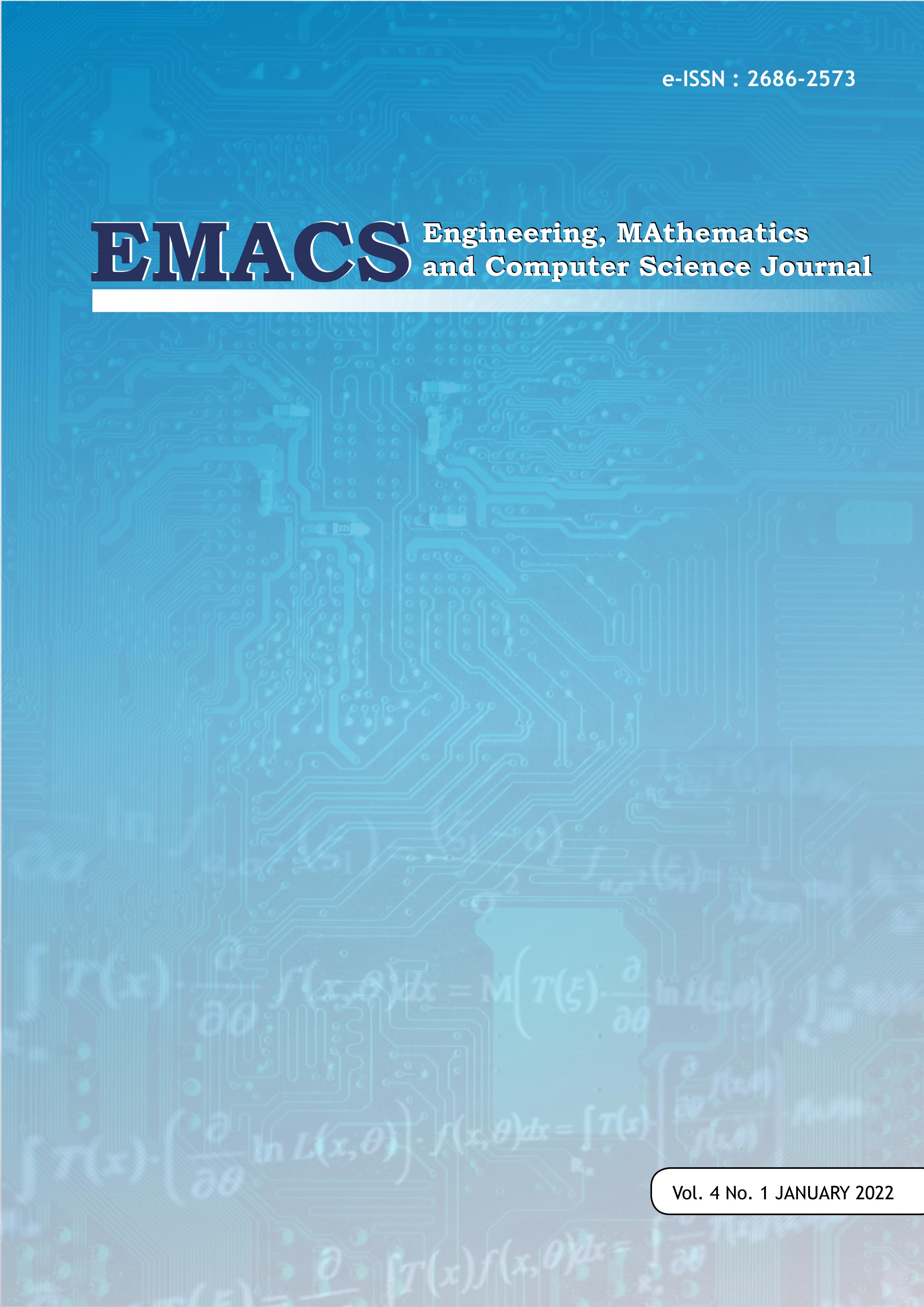Pengembangan Smart Air Condition Control Menggunakan Platform Blynk Berbasis Mikrokontroler ESP8266 dan Sensor DHT11
DOI:
https://doi.org/10.21512/emacsjournal.v4i1.8072Keywords:
IoT;, ESP8266;, Blynk;, ACAbstract
Air Conditioners (AC) are increasingly used to get the room temperature as desired, starting from home use to keep the room cool and enjoyable, to specific room like server rooms or ATM which are focused on keeping the room cool in order to keep the equipment cool. The role of AC is quite important to maintain room temperature, and its increasing use has led to the growing need for users to control the AC. The Internet of Things allows users to remotely control air conditioners using the gadgets used and get real time room temperature information. The AC control system based on Internet of Things (IoT) utilizes an internet connection to monitor room temperature and control AC remotely. The devices used are DHT11 as a temperature sensor to get room temperature, Infrared Receiver to read the code sent by the remote AC, Infrared Transmitter to send commands to the AC in the room, and ESP8266 as a microcontroller and a link to the internet. The IoT platform used is Blynk which has the ability to access the microcontroller from the user's gadget. The tests are running on room air conditioners such as the Panasonic CS-PC18PKP series, the Panasonic CS-YN18TKP series and the Samsung AR09TGHQASINSE series. The test results showed that the room air conditioner was successfully controlled, and the room temperature was read in real time via an android smartphone.
References
Arunprakash, C., & Sastry, K. R. K. (2018, January). Implementation of Air Conditioner Infrared Protocol on a Reconfigurable Hardware. In 2018 8th International Conference on Cloud Computing, Data Science & Engineering (Confluence) (pp. 787-790). IEEE.
Danang, D., & Toyib, M. (2022). ANALISA TROUBLE SHOOTING AIR CONDITIONER NIPPON DENSO PADA UNIT SCANIA P380 MENGGUNAKAN MICROCONTROLER. Jurnal Publikasi Teknik Informatika, 1(1), 34-44.
Desnanjaya, I. G. M. N., Giriantri, I. A. D., & Hartati, R. S. (2013). Rancang Bangun Sistem Control Air Conditioning Automatis Berbasis Passive Infrared Receiver. Prosiding Conference on Smart-Green Technology in Electrical and Information System, C–010, 165–171. http://ojs.unud.ac.id/index.php/prosidingcsgteis2013/article/download/7247/5496.
Evans, D. (2011). The internet of things: How the next evolution of the internet is changing everything. CISCO white paper, 1(2011), 1-11.
Han, J., Choi, C. S., & Lee, I. (2011). More efficient home energy management system based on ZigBee communication and infrared remote controls. IEEE Transactions on Consumer Electronics, 57(1), 85-89.
Islam, H. I., Nabilah, N., Atsaurry, S. S., Saputra, D. H., Pradipta, G. M., Kurniawan, A., Syafutra, H., Irmansyah, I., & Irzaman, I. (2016). Sistem Kendali Suhu Dan Pemantauan Kelembaban Udara Ruangan Berbasis Arduino Uno Dengan Menggunakan Sensor Dht22 Dan Passive Infrared (Pir). V(Lcd), SNF2016-CIP-119-SNF2016-CIP-124. https://doi.org/10.21009/0305020123
Jani, D. B., Mishra, M., & Sahoo, P. K. (2017). A critical review on solid desiccant-based hybrid cooling systems. International Journal of Air-conditioning and Refrigeration, 25(03), 1730002.
Kodali, R. K., & Mahesh, K. S. (2016, December). Low cost ambient monitoring using ESP8266. In 2016 2nd International Conference on Contemporary Computing and Informatics (IC3I) (pp. 779-782). IEEE.
Mochammad Haldi Widianto. (2019). Alat Pengatur Suhu Otomatis pada Ruangan Produksi Textile Spining Berbasis. 2(1), 51–58.
Nejakar, S. M., & Pruthvi, S. (2014). Wireless infrared remote controller for multiple home appliances. International Journal of Electrical and Electronics Research, 2(1), 25-35.
Olesen, B. W., & Parsons, K. C. (2002). Introduction to thermal comfort standards and to the proposed new version of EN ISO 7730. Energy and buildings, 34(6), 537-548.
Parihar, Y. S. (2019). Internet of Things and Nodemcu. Journal of Emerging Technologies and Innovative Research, 6(6), 1085.
Schwartz, M. (2016). Internet of Things with ESP8266. Packt Publishing Ltd.
Serikul, P., Nakpong, N., & Nakjuatong, N. (2018, November). Smart farm monitoring via the Blynk IoT platform: case study: humidity monitoring and data recording. In 2018 16th International Conference on ICT and Knowledge Engineering (ICT&KE) (pp. 1-6). IEEE.
Syarifuddin, A. (2018). Budidaya Jamur Tiram Berbasis Internet of Things. JURNAL TeknoSAINS, 01(01), 1–14.
Downloads
Published
How to Cite
Issue
Section
License
Copyright (c) 2022 Engineering, MAthematics and Computer Science (EMACS) Journal

This work is licensed under a Creative Commons Attribution-ShareAlike 4.0 International License.
Authors who publish with this journal agree to the following terms:
- Authors retain copyright and grant the journal right of first publication with the work simultaneously licensed under a Creative Commons Attribution License - Share Alike that allows others to share the work with an acknowledgment of the work's authorship and initial publication in this journal.
- Authors are able to enter into separate, additional contractual arrangements for the non-exclusive distribution of the journal's published version of the work (e.g., post it to an institutional repository or publish it in a book), with an acknowledgment of its initial publication in this journal.
- Authors are permitted and encouraged to post their work online (e.g., in institutional repositories or on their website) prior to and during the submission process, as it can lead to productive exchanges, as well as earlier and greater citation of published work.
USER RIGHTS
All articles published Open Access will be immediately and permanently free for everyone to read and download. We are continuously working with our author communities to select the best choice of license options, currently being defined for this journal as follows: Creative Commons Attribution-Share Alike (CC BY-SA)





